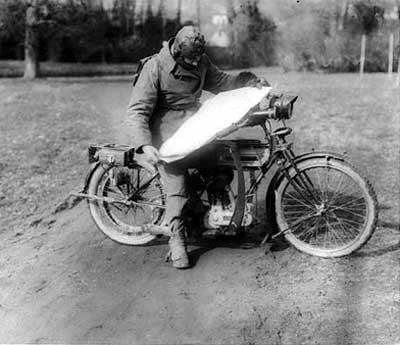Whether you're a "windshield tourist" who rarely leaves the pavement or a serious backcountry hiker, you'll find plenty of high-tech aids to navigation. GPS units, apps for smart phones and other electronic devices offer a growing number of alternatives to traditional paper maps.
Both approaches clearly have their pros and cons—and their fans. It's hard to beat a traditional paper map when you want to get the big picture of an area or your route, and for backcountry users, the venerable topographic map offers details that can be critical to survival. Although figuring out how to refold that old-school map can sometimes be a pain, there's no denying their major advantages: they'll work anywhere, and the battery never dies.
A GPS and other electronic travel aids, on the other hand, might offer more current information than a paper map, can search out local services such as restaurants and gas stations, and can be read in the dark without a flashlight. Some devices, such as electronic versions of topographic maps, try to combine the best of both worlds.
Cautious travelers realize that directions from a GPS can sometimes lead the unwary into difficult or even dangerous situations. In some cases, route information is wildly inaccurate, and park visitors have died after following faulty directions and becoming stranded in remote locations.
So...what's your preference for navigating to—and through—a park? Do you still unfold a trusty paper map, rely on a high-tech device, or use a combination of the two?
Have you had any personal adventures—or misadventures—as a result of using either an old- style map or an electronic version?




Comments
Actually, Bob, the GPS had you at the right spot (the right GPS coordinates) but the mapping software had the trail drawn in the wrong. It is amazing to me how the major mapping software companies (Garmin and Delorme) can have such major errors in their mapping. Delorme, for example has the CDT trail shifted 1/2 mile over much of its length. Major sections of the AT are also misplaced. And can they really justify not have 14er routes?
Ever since Mapquest (back in the day) sent me the wrong way up a one-way street on a very steep hill in Seattle, I've been dubious of electronic directions.
Then again, a paper map once sent me off a freeway exit in Ohio to a state highway that did not exist.
Neither is perfect.
But I'm a paper map person at heart.
For the backcountry, definitely paper. It forces you to have skills that could make a big difference.
I've never cared to spend the money on electronic but I've hiked with some people who did. I did not see advantages sufficient to justify the cost.
GPS for driving, but with paper maps as a backup if I'm in another state, just in case it malfunctions. On the trail I'll have my GPS out mainly to record my path so I can upload it onto mapping software when I get home, and have another trip souvenir in addition to photos to show where I've been. Still, I also treasure my collection of worn, torn, water-stained paper maps from past trips, pre- and post-GPS.
One other (debatable) benefit to having a GPS on the trail, especially when I'm not in open country, is that I know exactly how far it is to the next trail junction/water source/road/campsite, and don't have to guestimate in the absence of a recognizable waypoint. Pre-GPS, I might start feeling antsy if I didn't reach a particular destination anywhere near my ETA, and start wondering if I might have missed a blaze and shot passed an overgrown trail junction or something. The downside though, is that I don't think it's important to know exactly where I am down to a few meters; in fact I think that having that precise amount of detailed information on my whereabouts detracts from the experience of being out in the backcountry to begin with. But it's good information to have when sunset is less than an hour away and you're wondering whether you should stop and set up camp right where you are, or whether you still have time to press on a little further and get to a place where you know there's supposed to be a creek nearby.
I once was able to drive a vehicle that had a built in navigation system. I so very excited to be out in civilization that I decided to hit a Starbucks (nearest one a 4 hour drive from my house) so I punched it in. The GPS led me to one that wasn't even built yet and there wasn't going to be another one for the rest of my trip. I was so traumatized by that experience that I have never trusted another electronic navigation system. I'm all about the paper maps and have always used those.